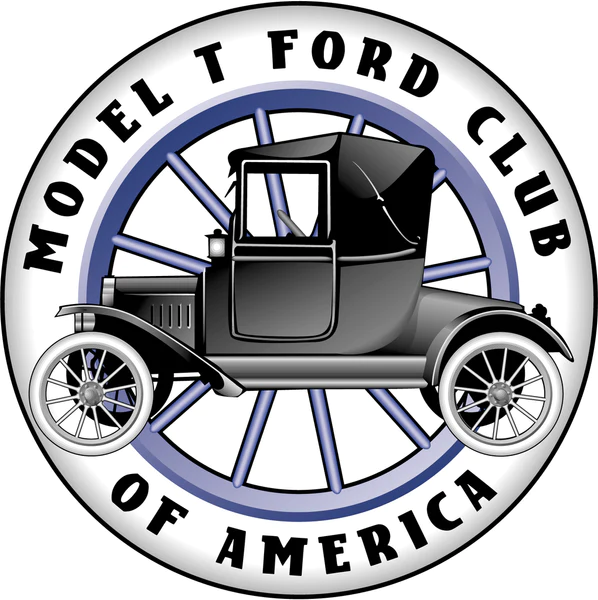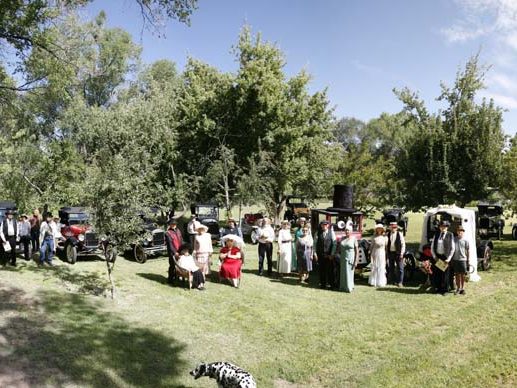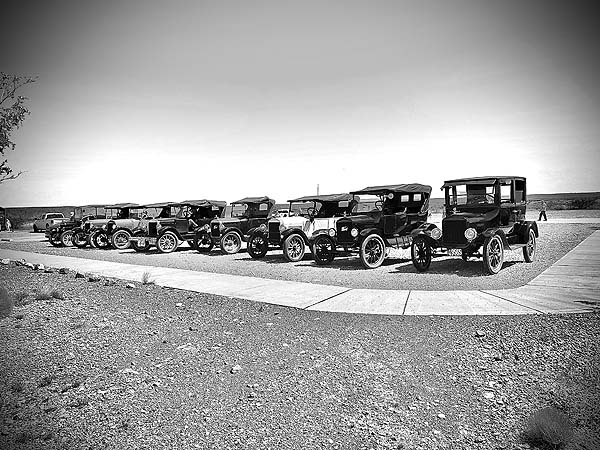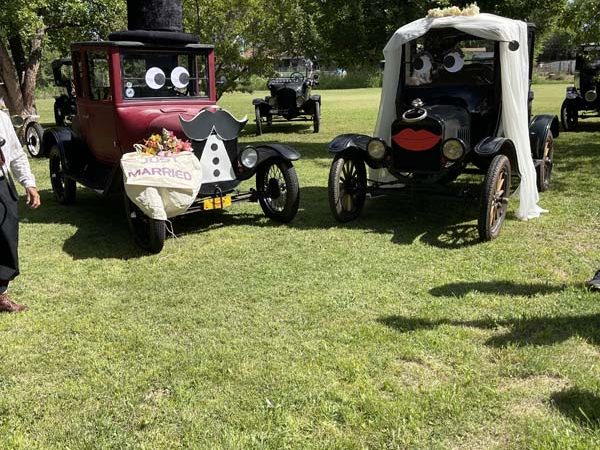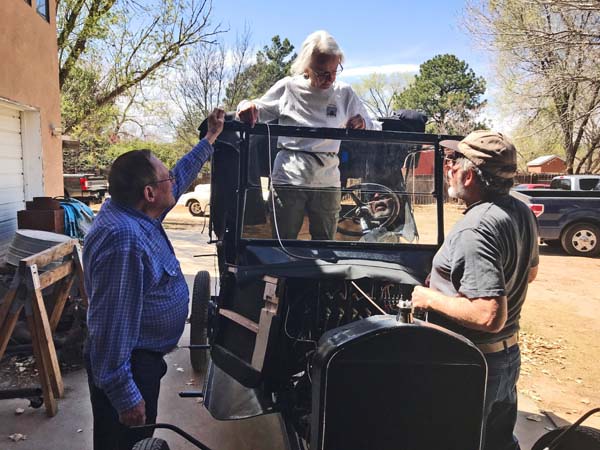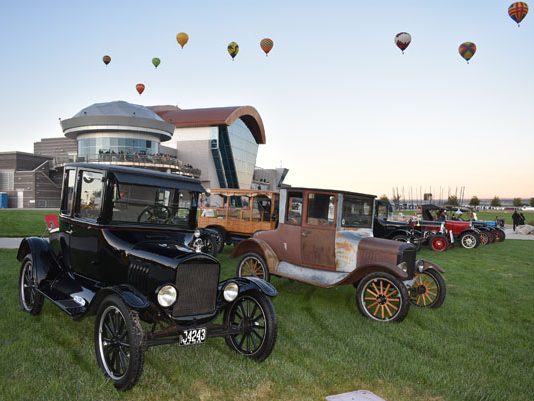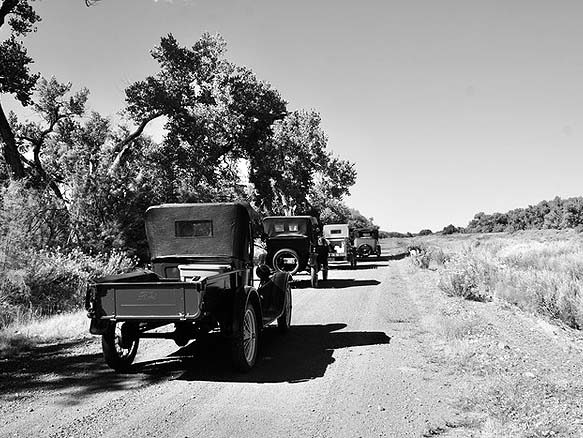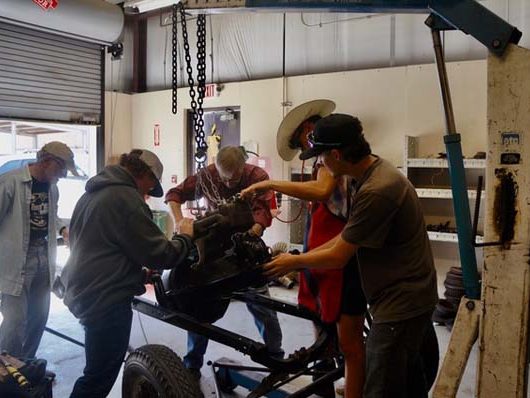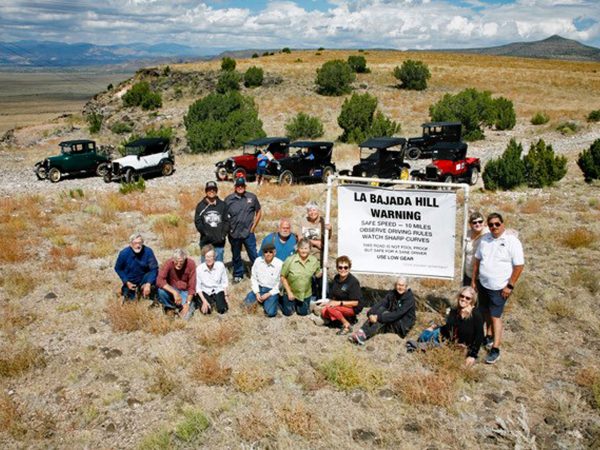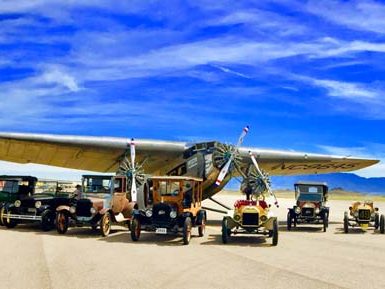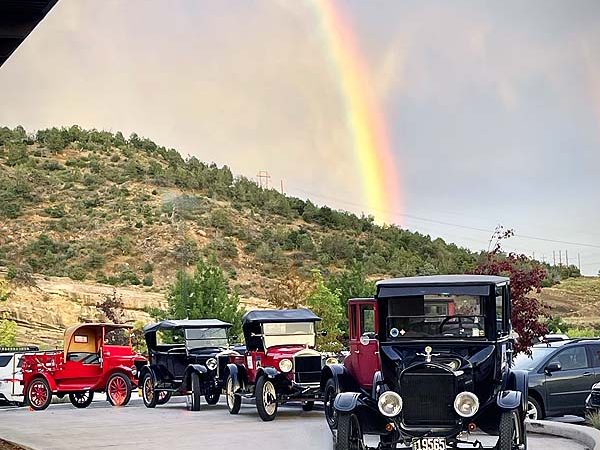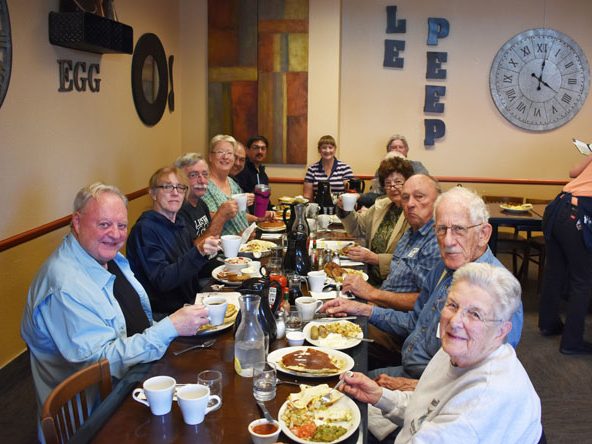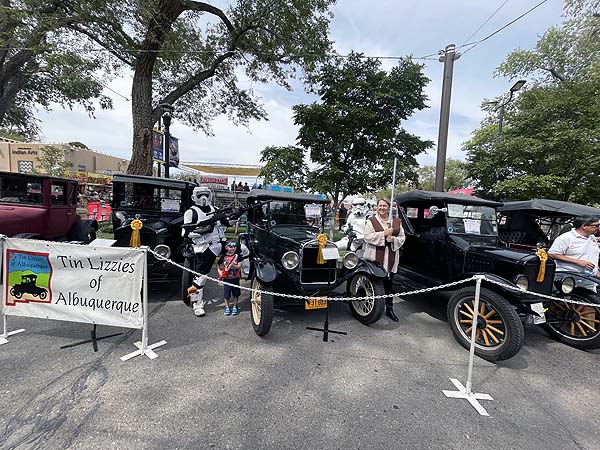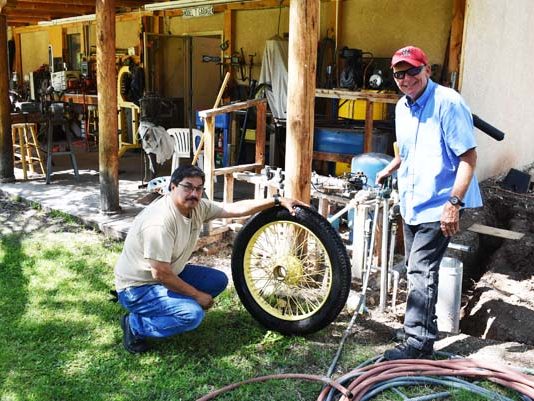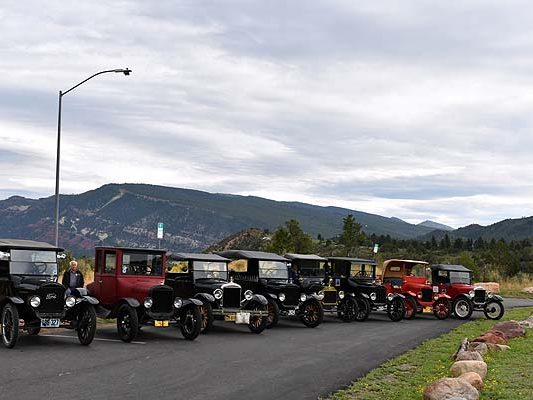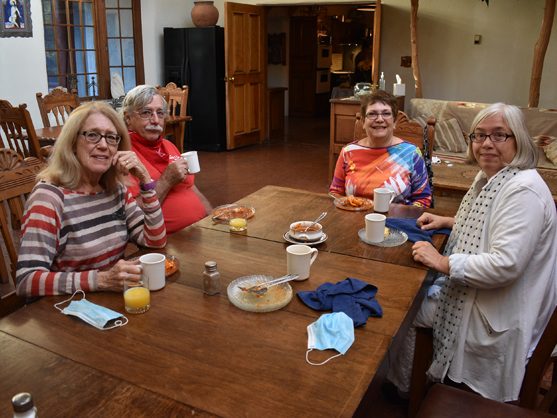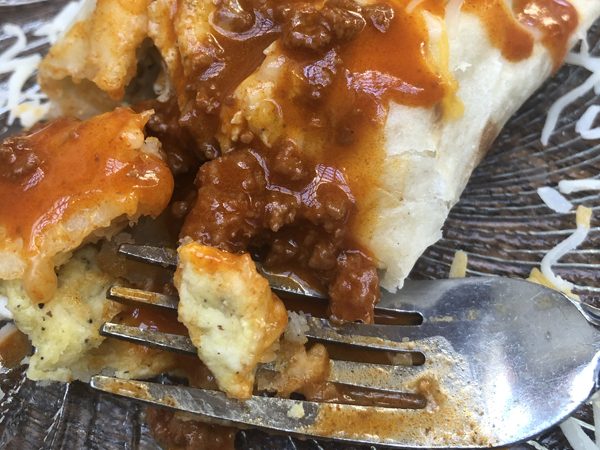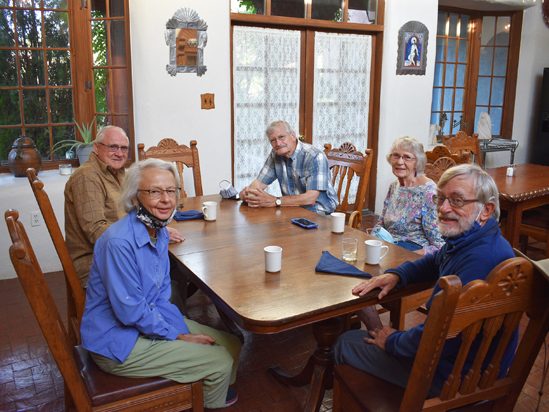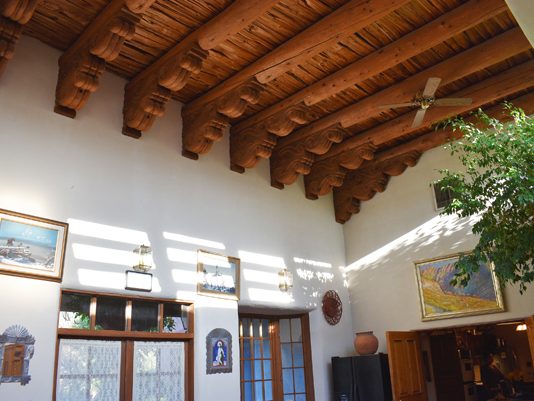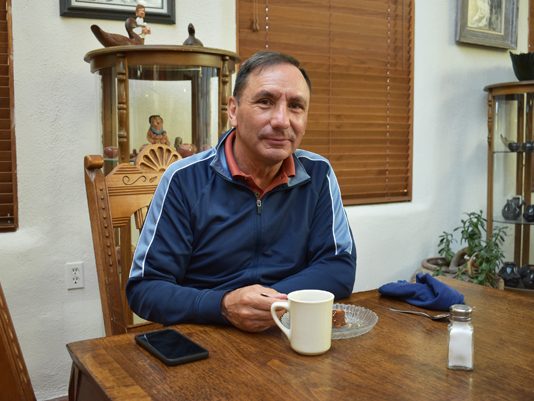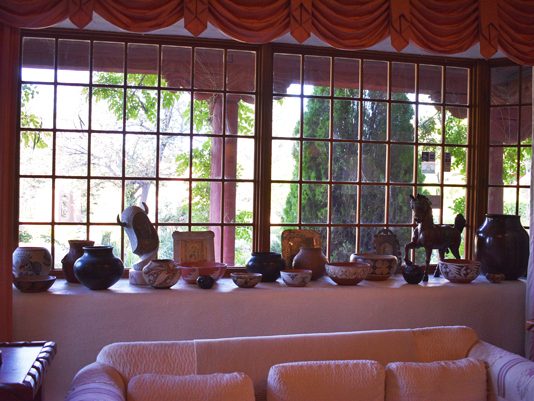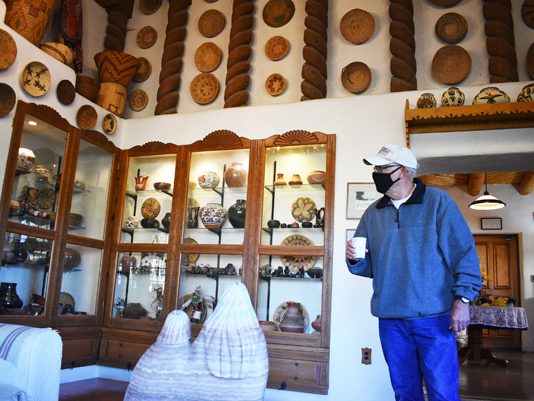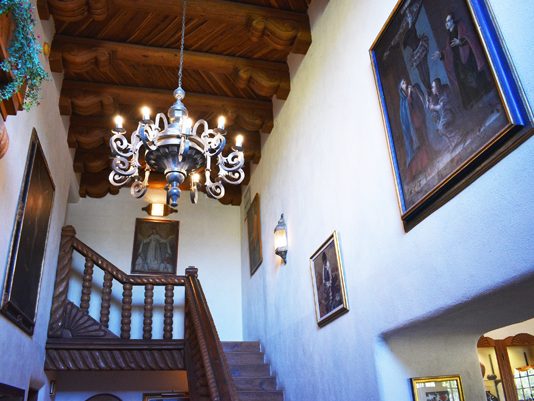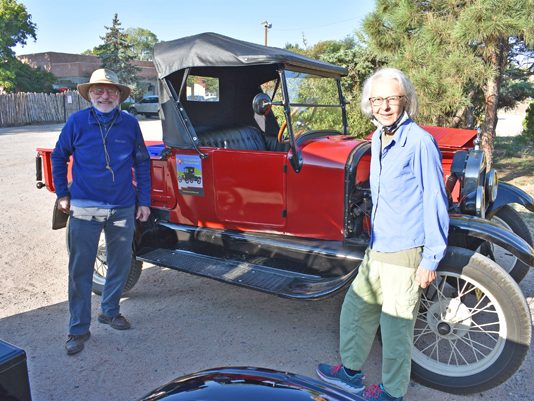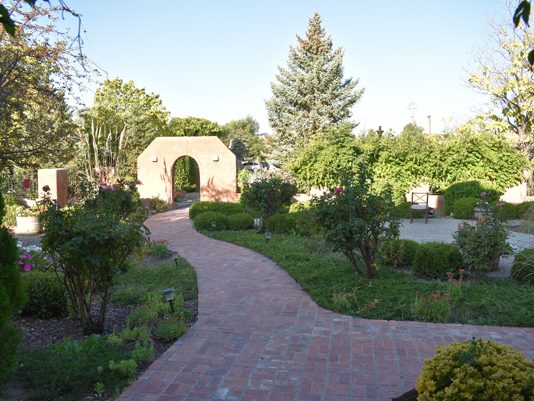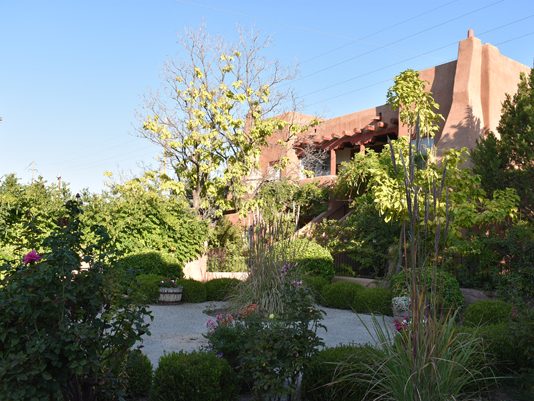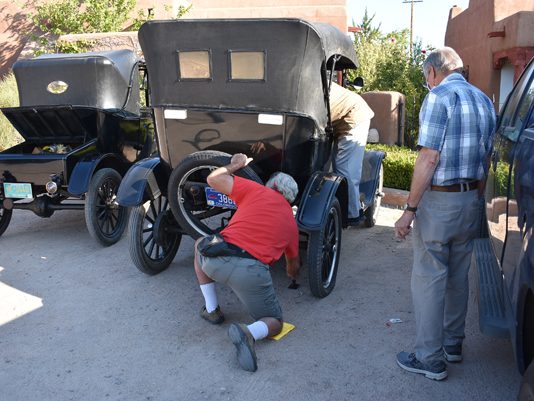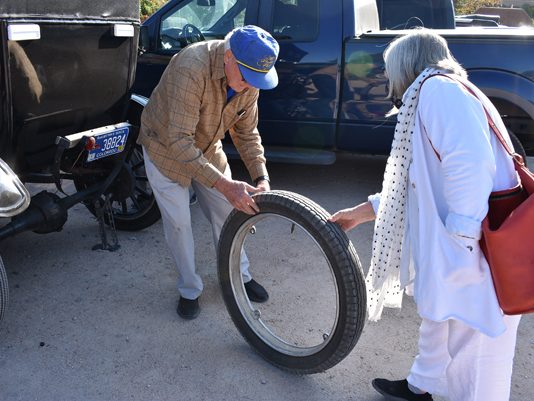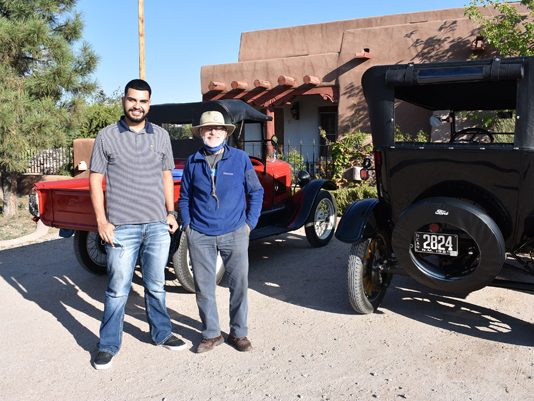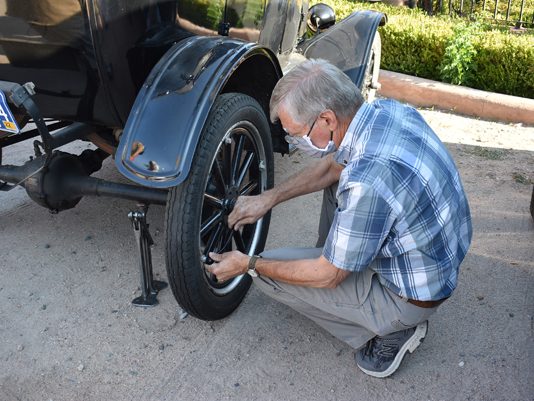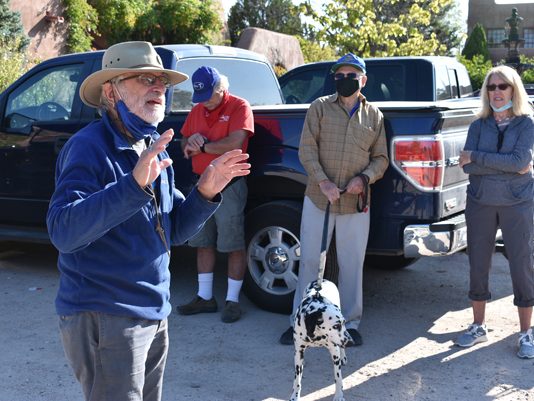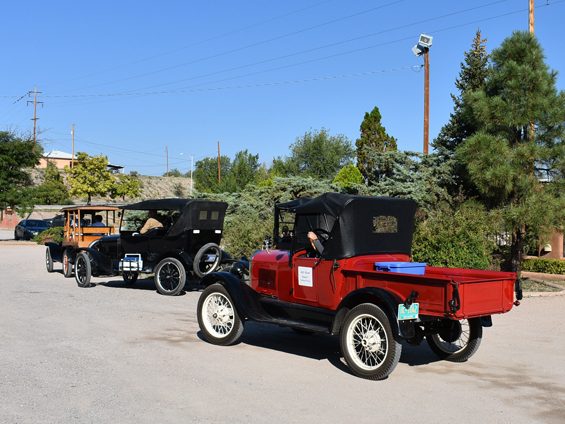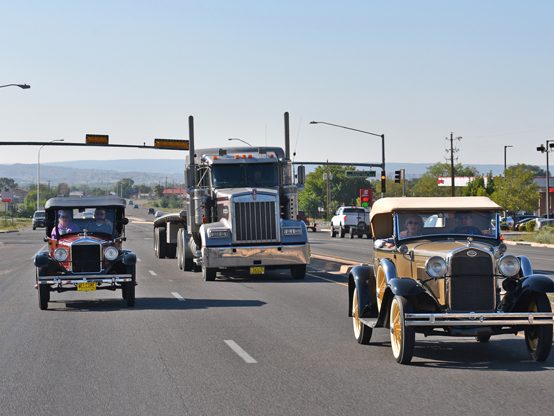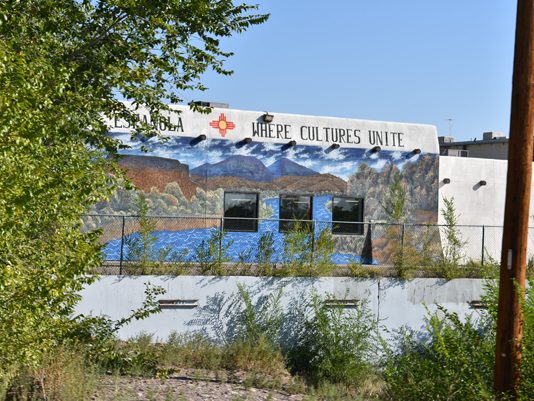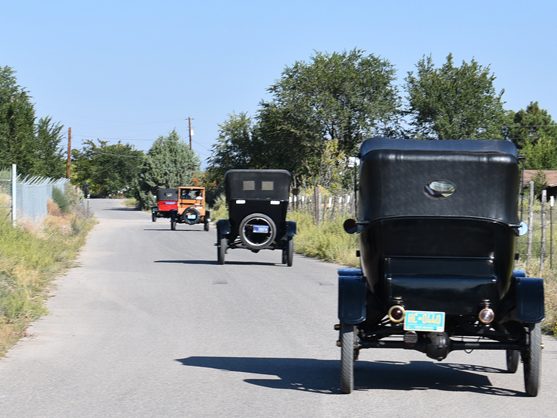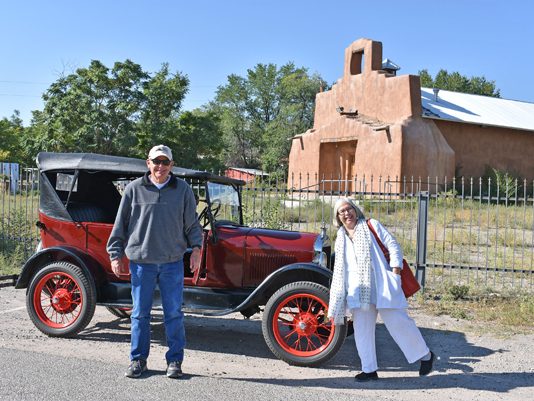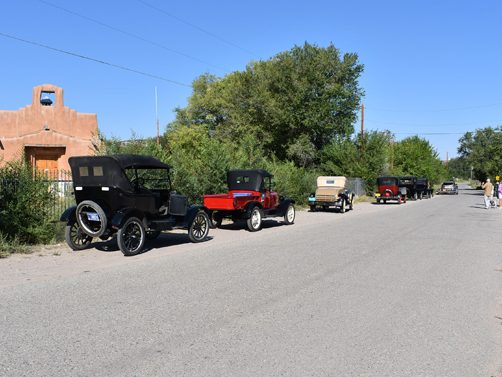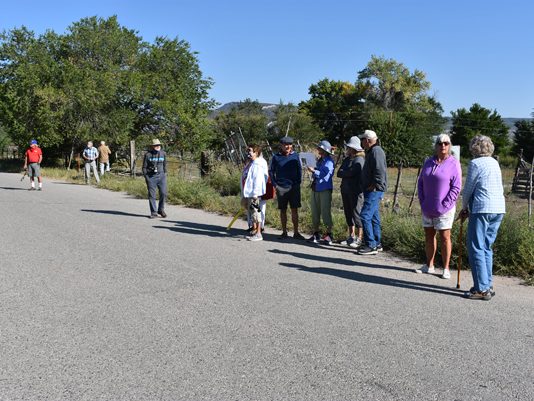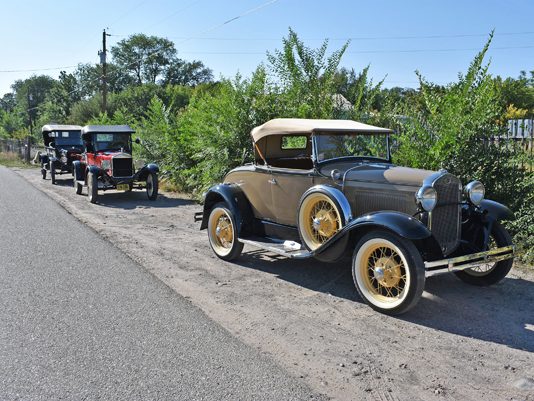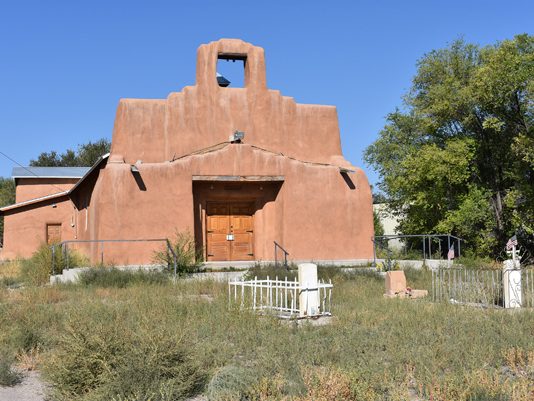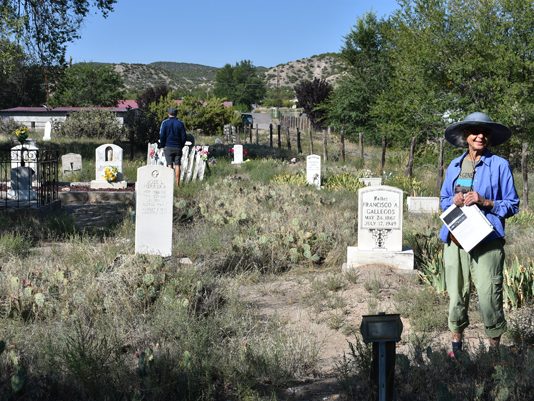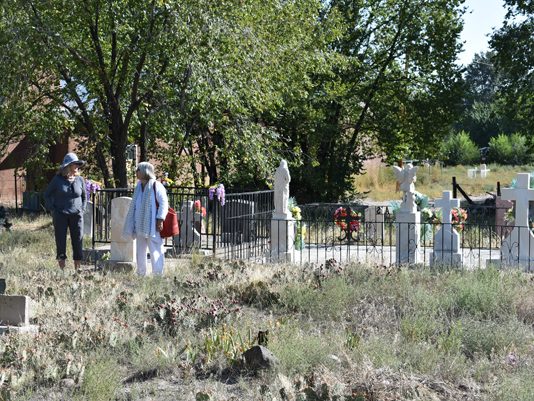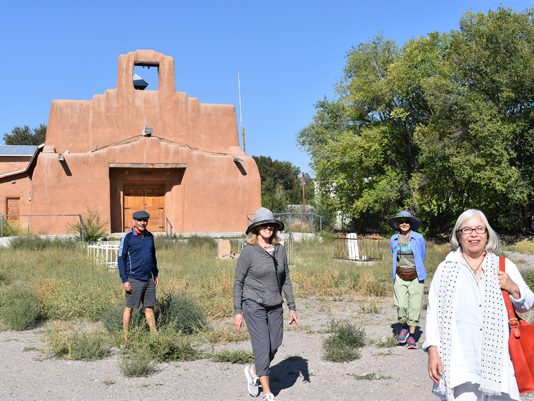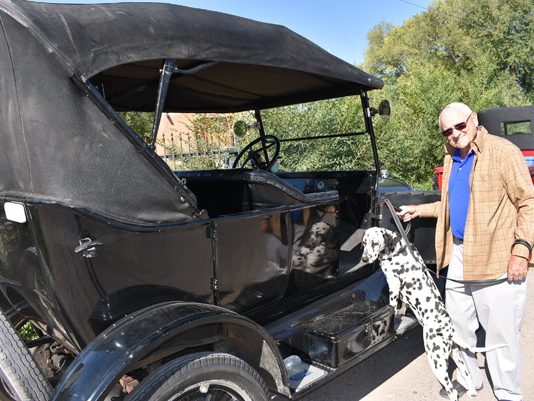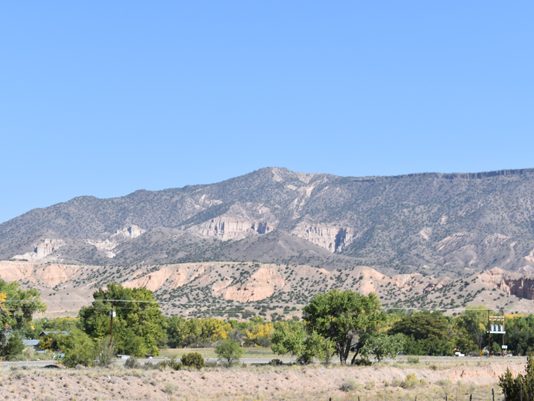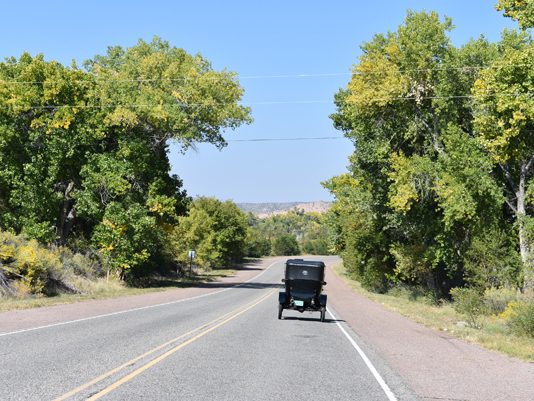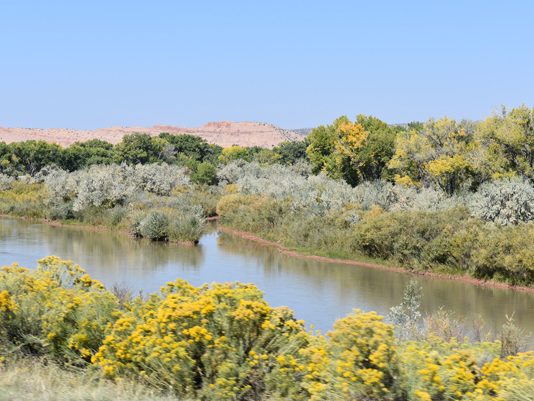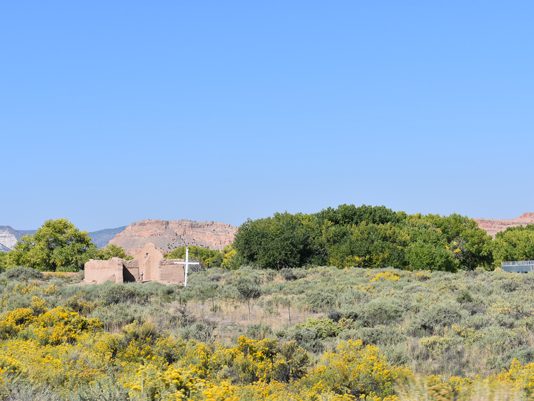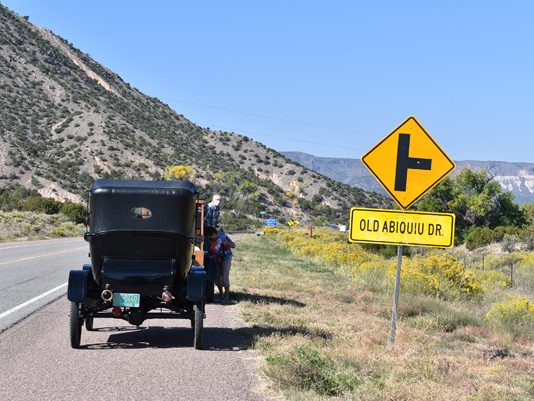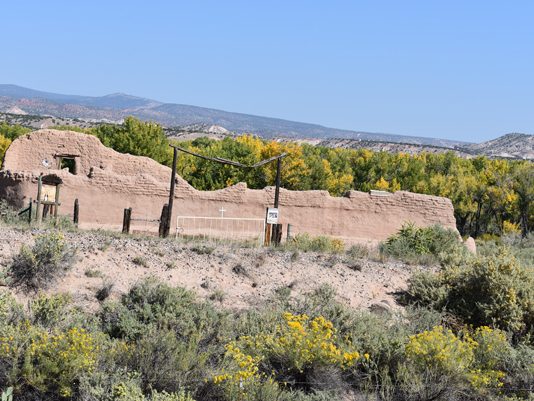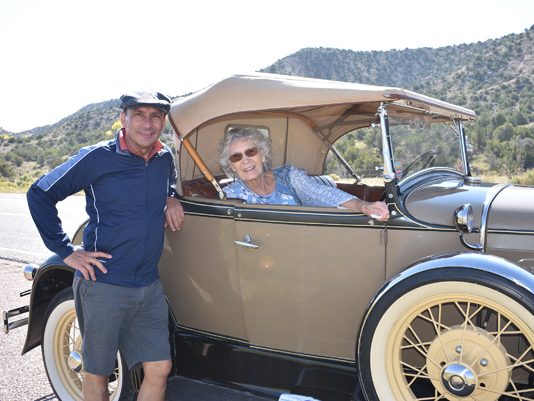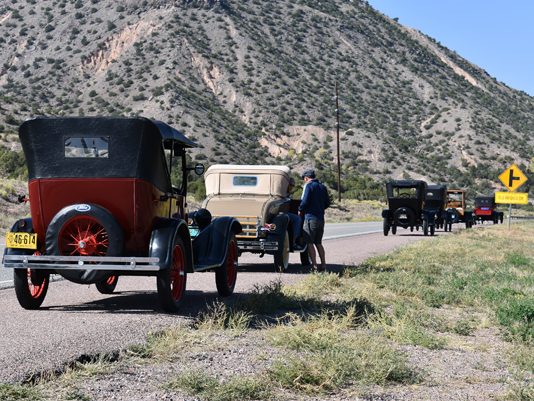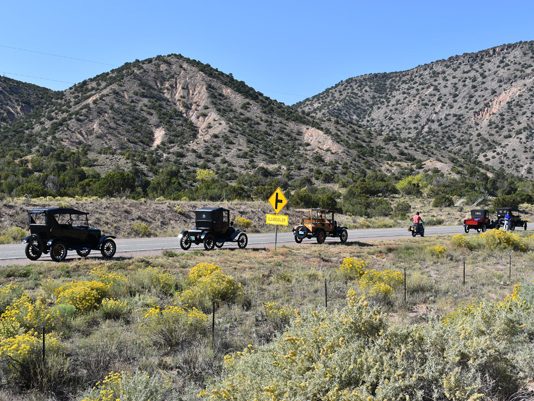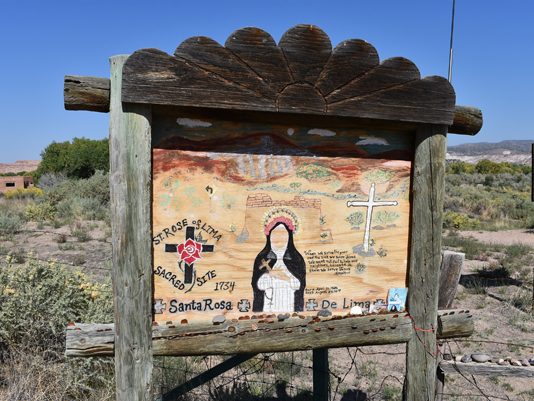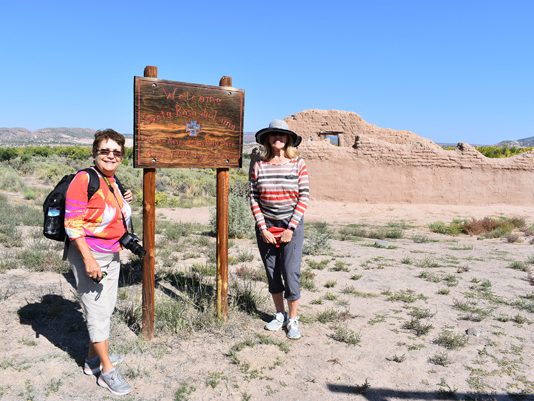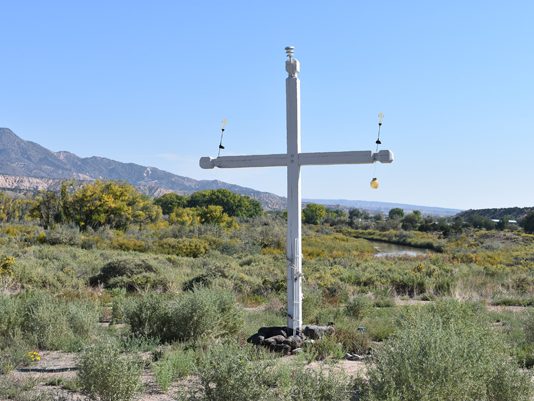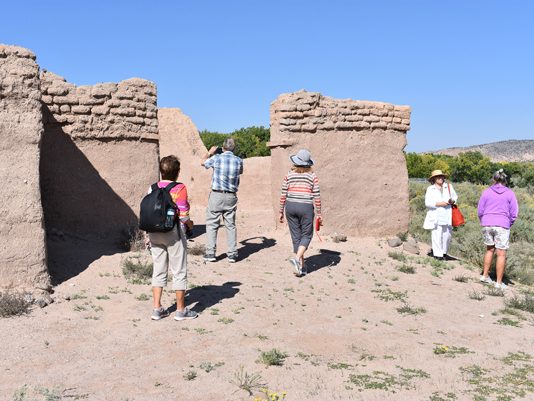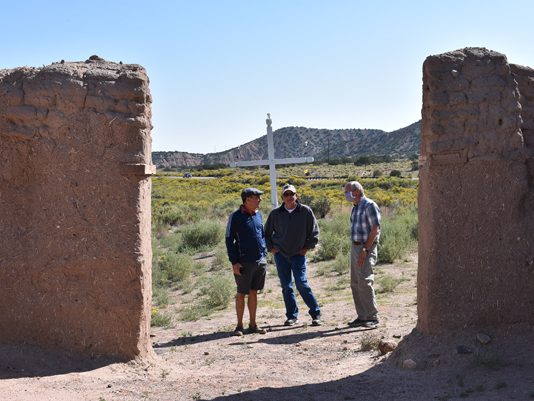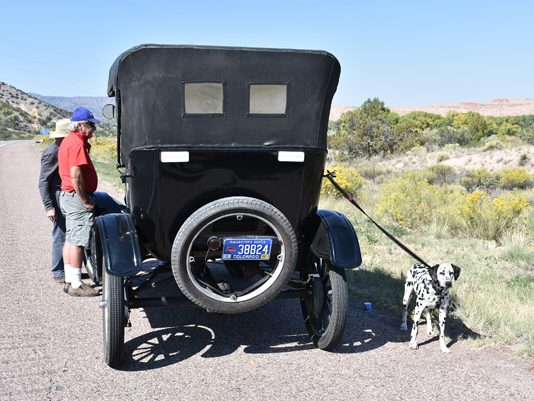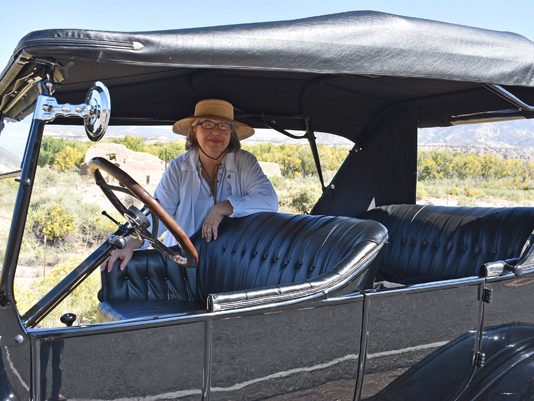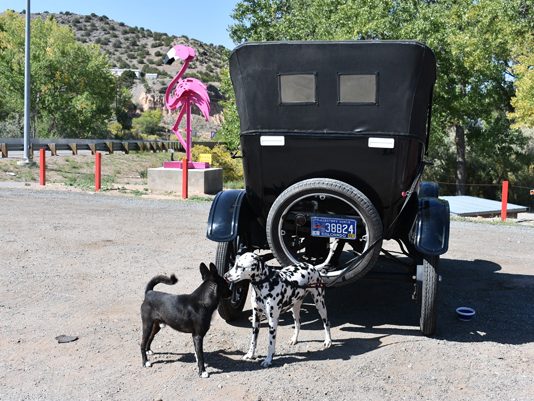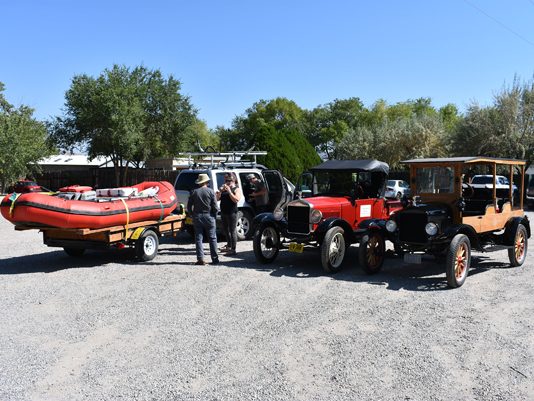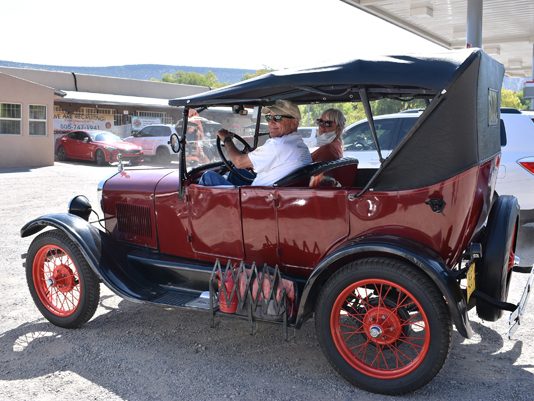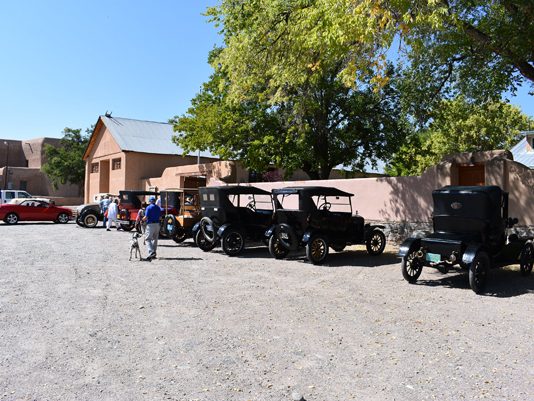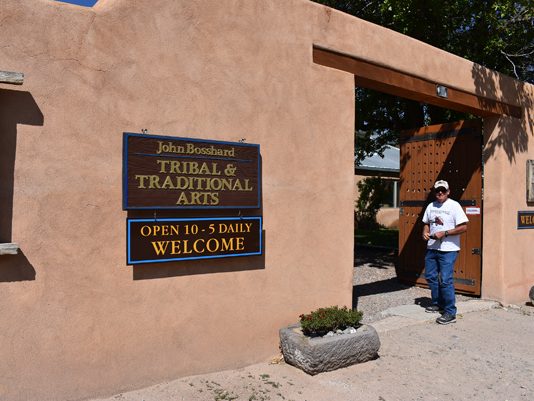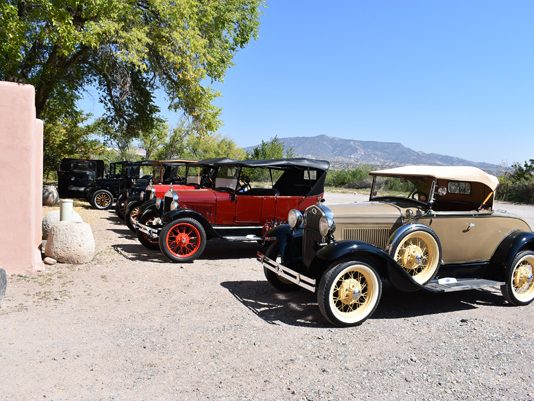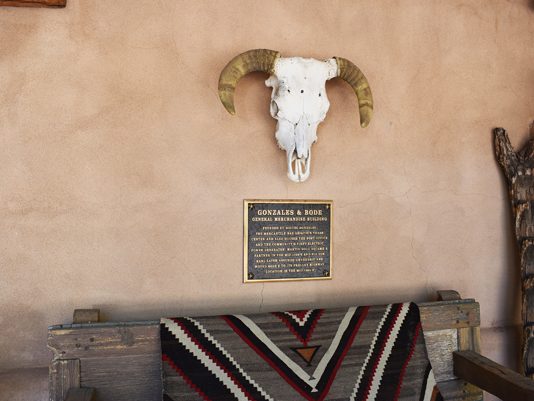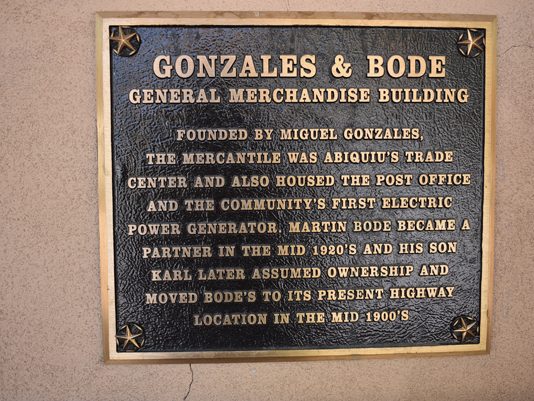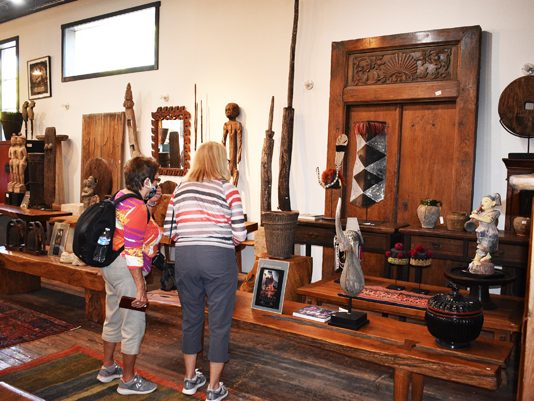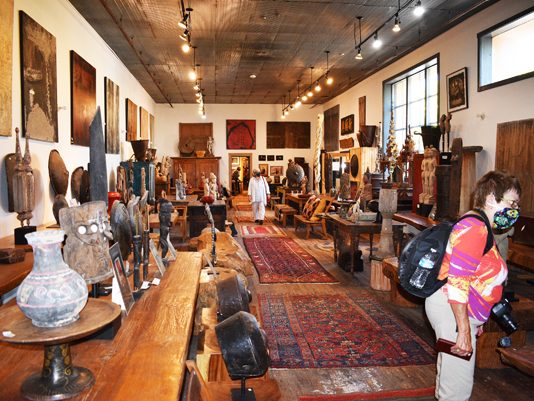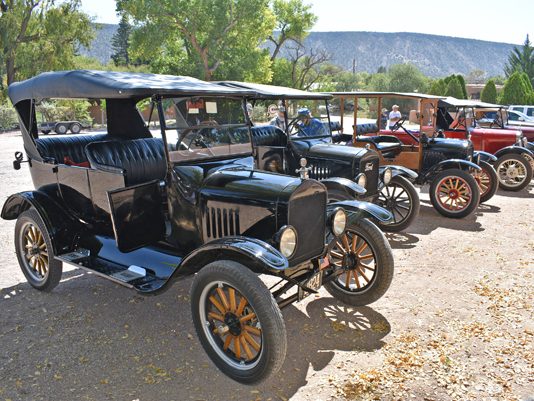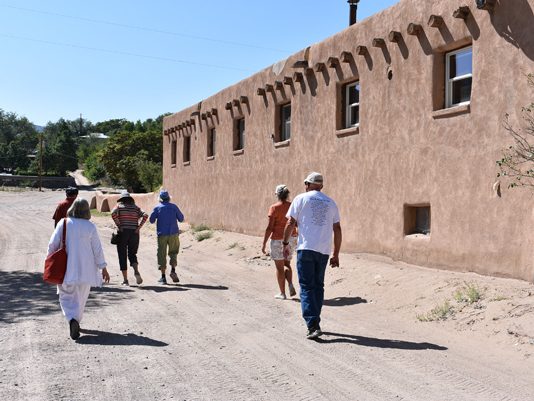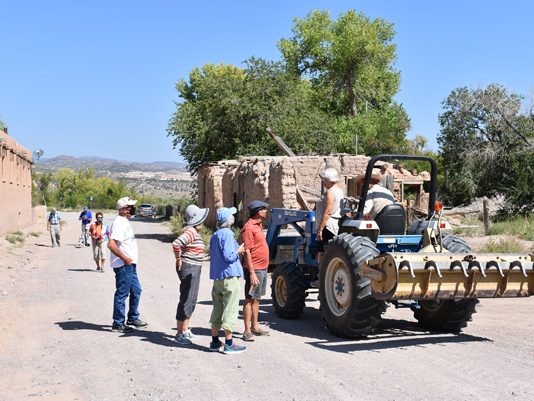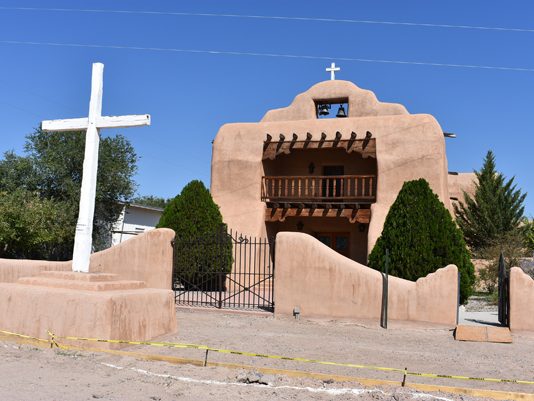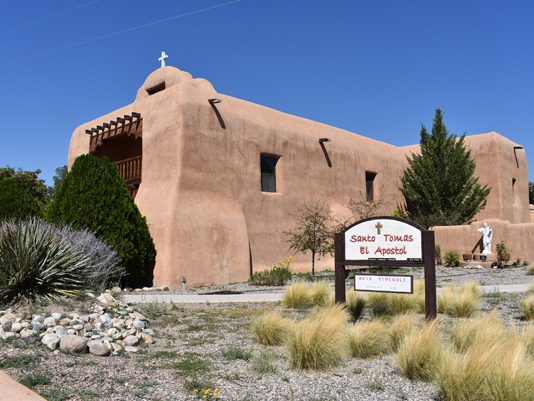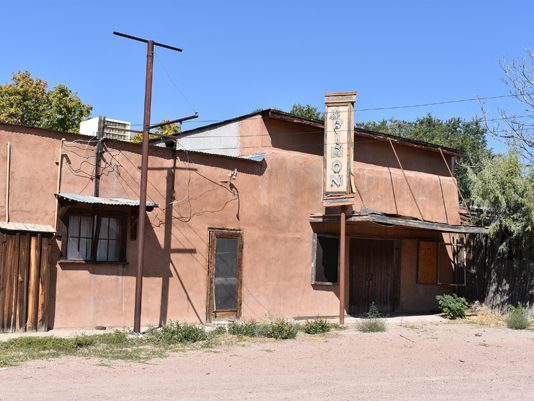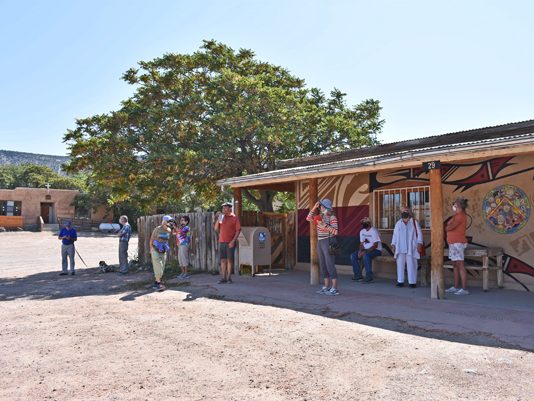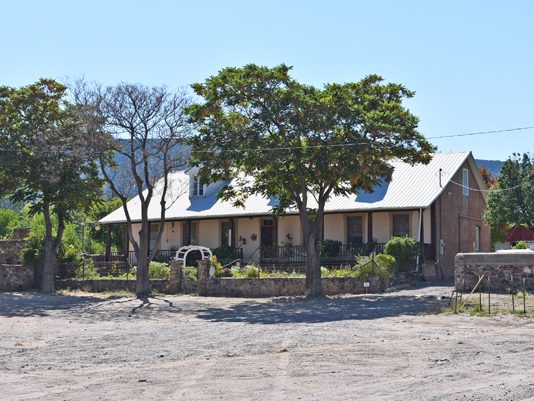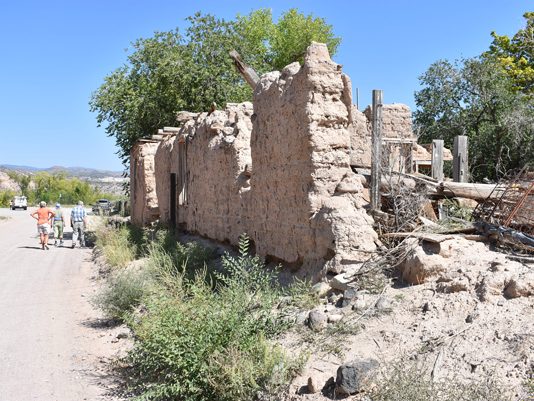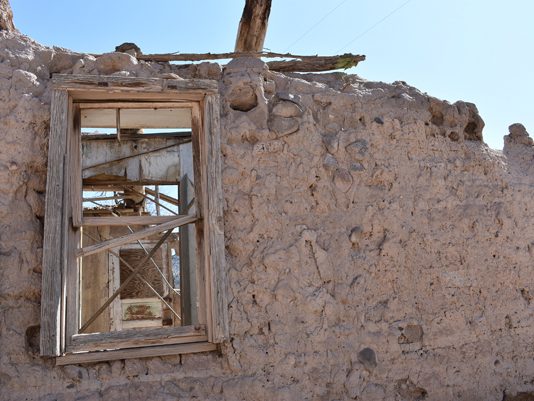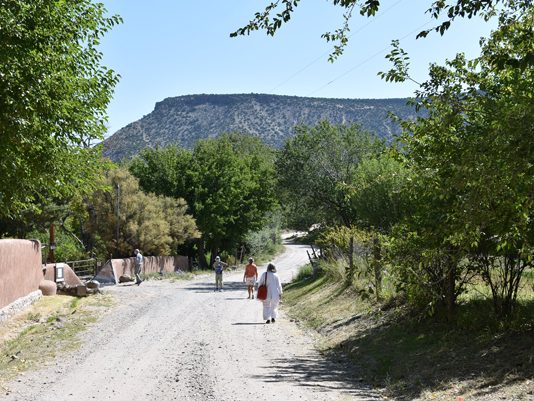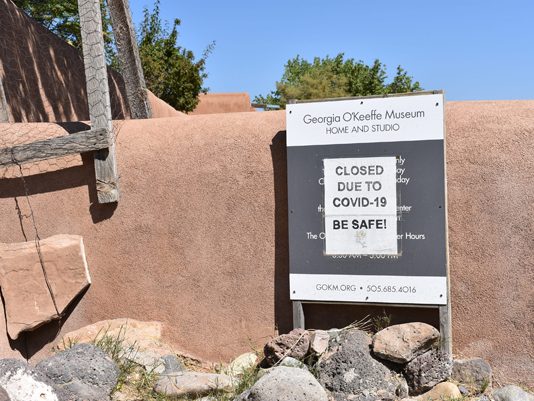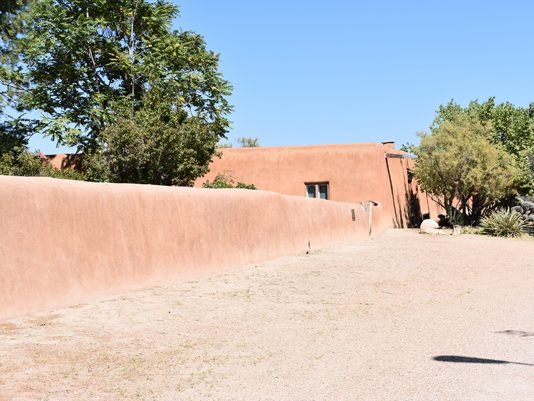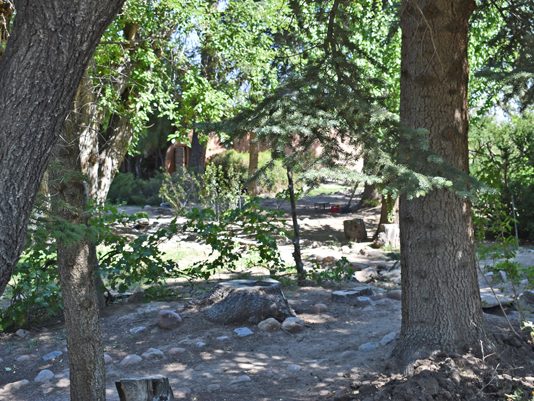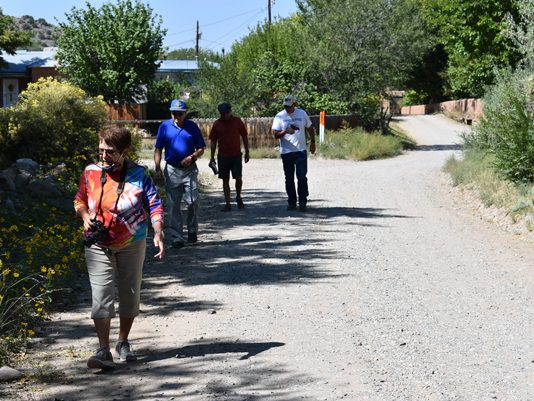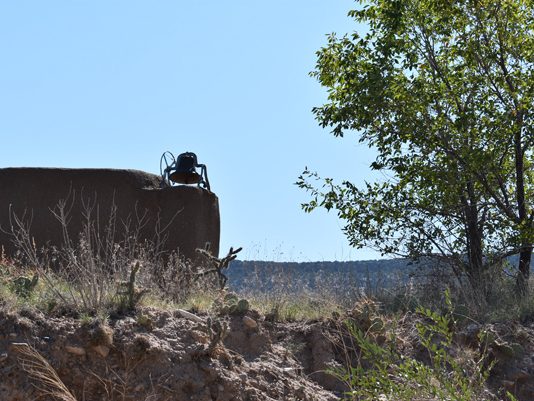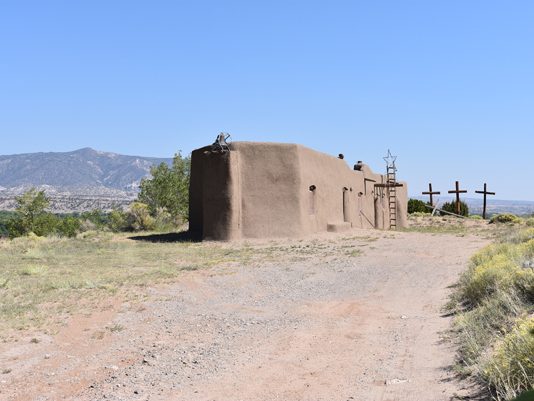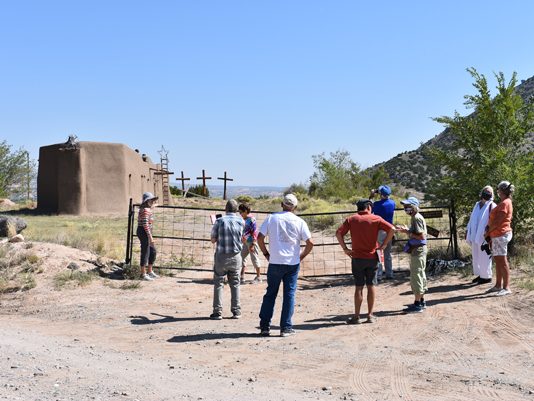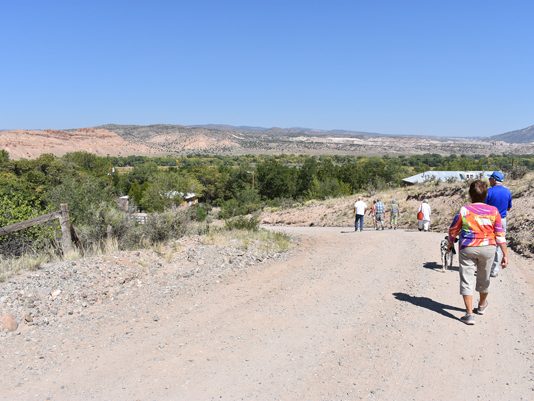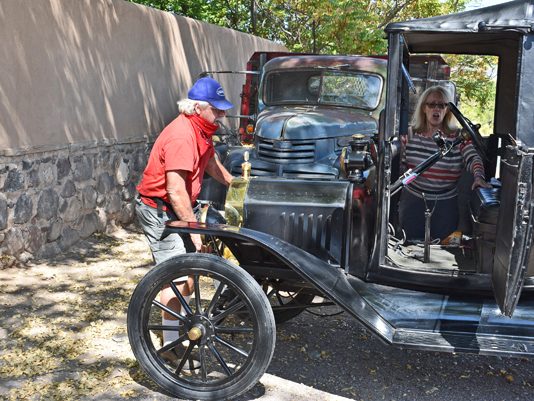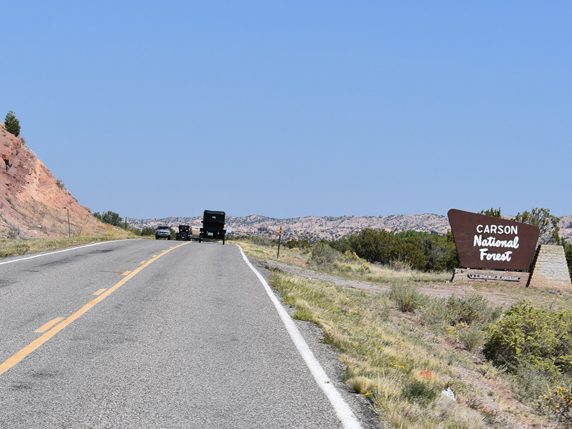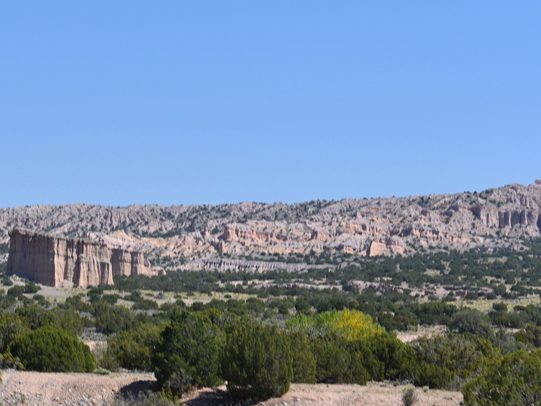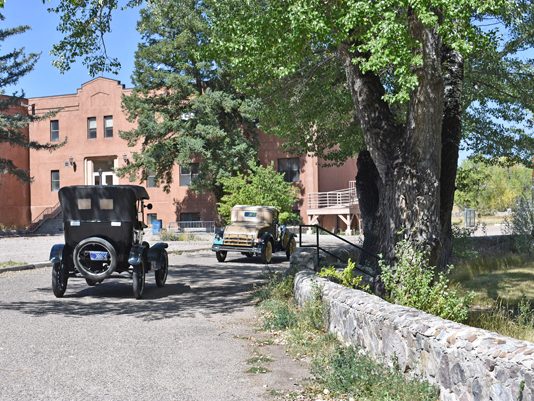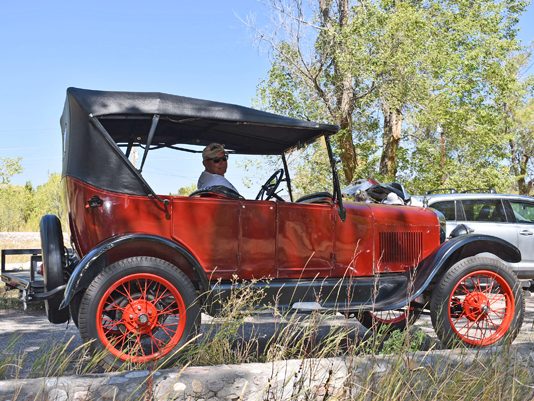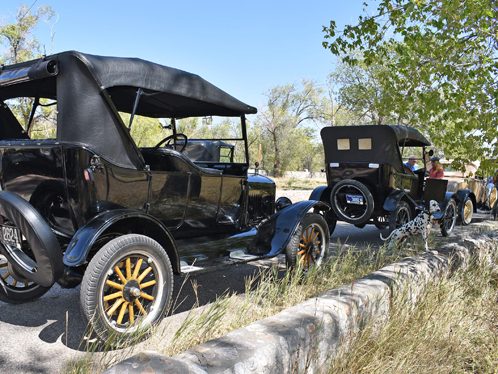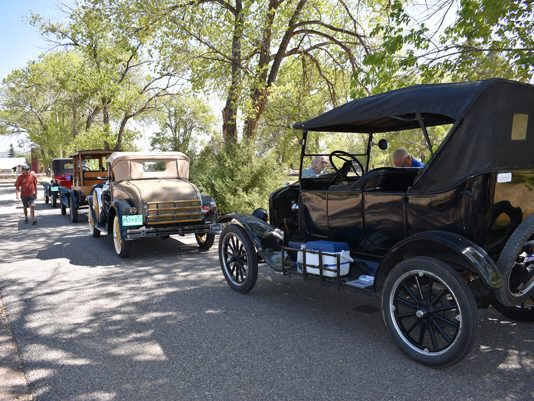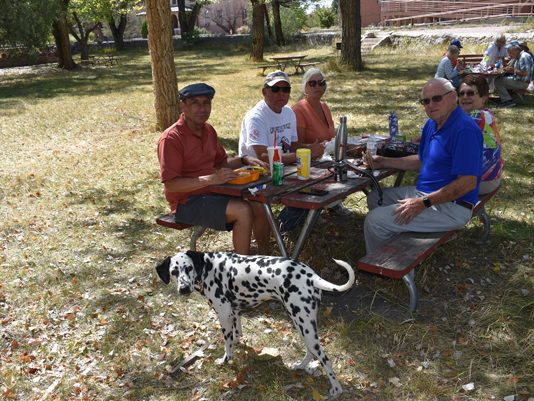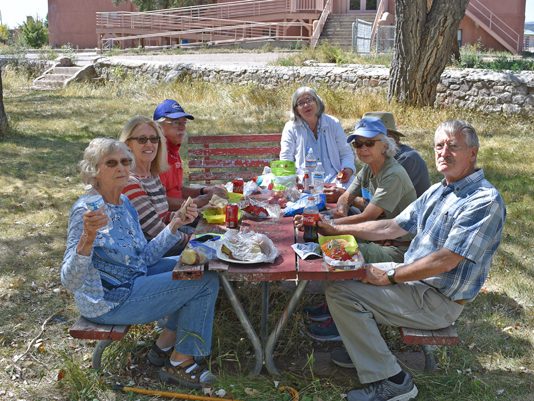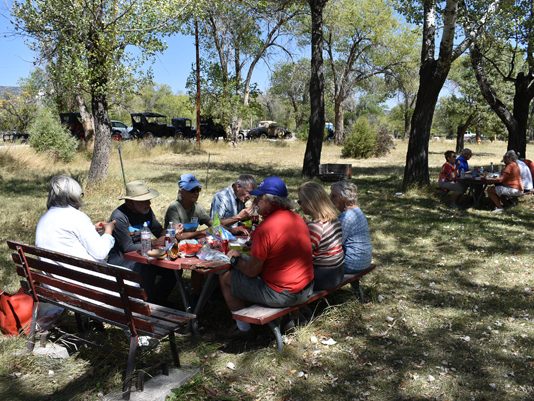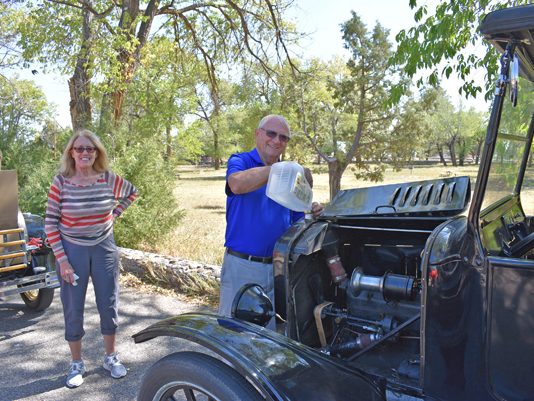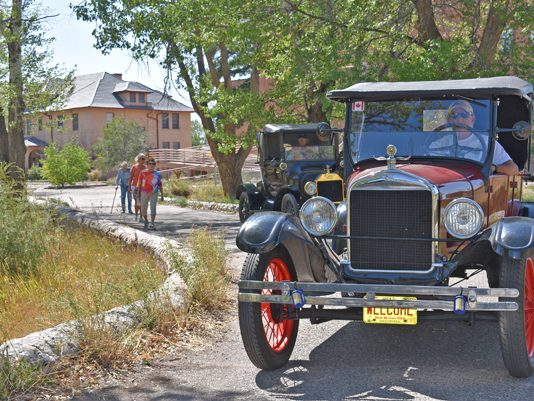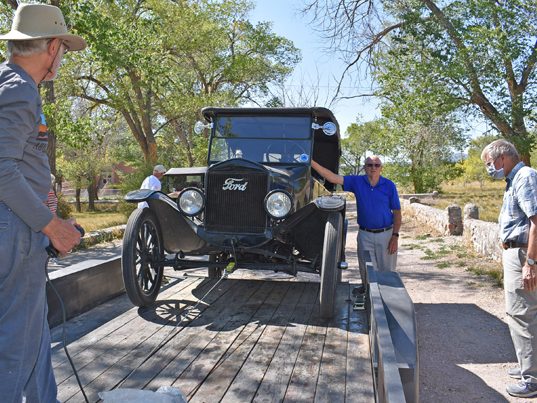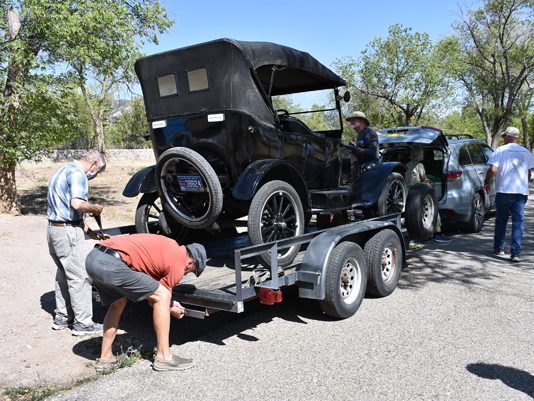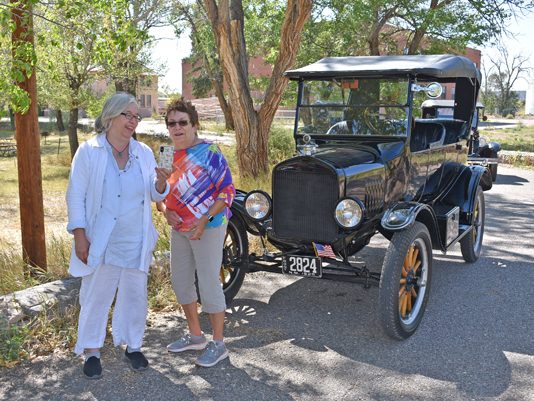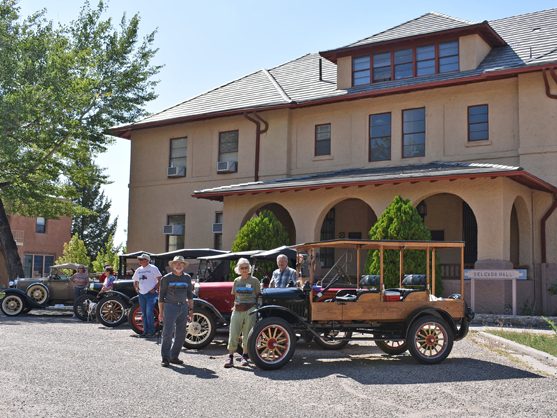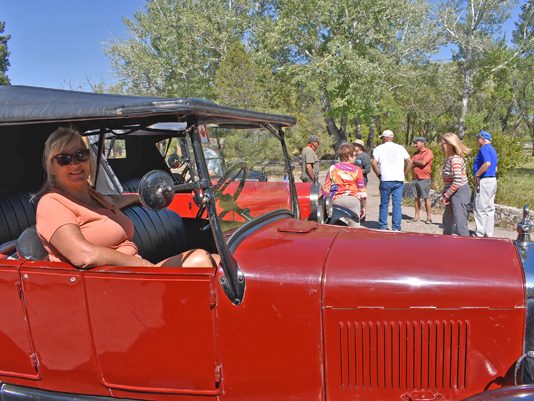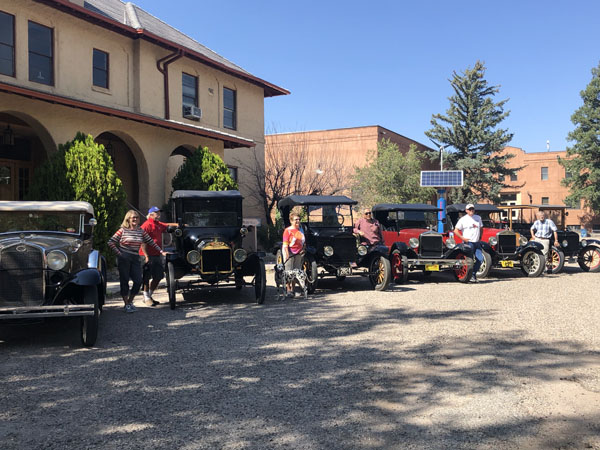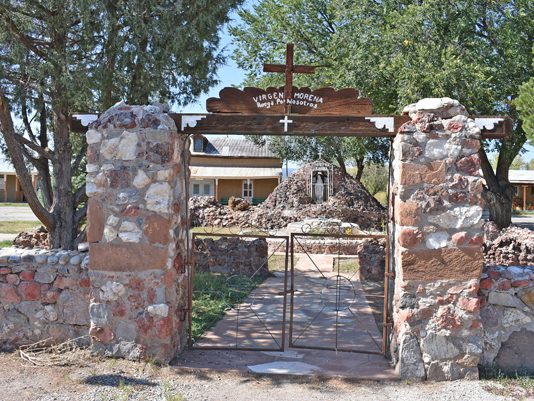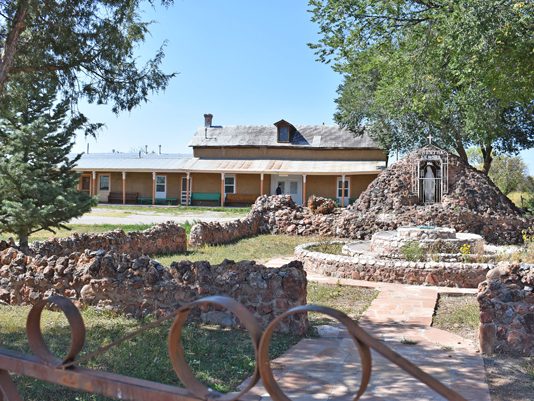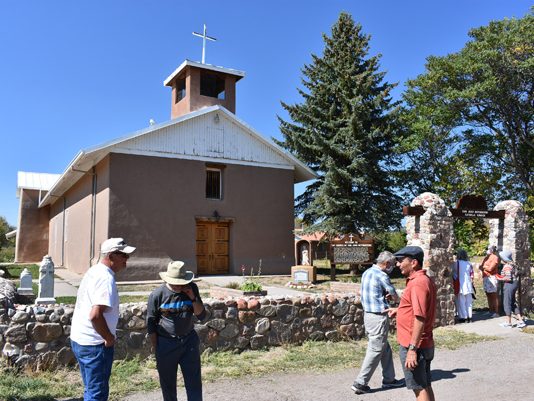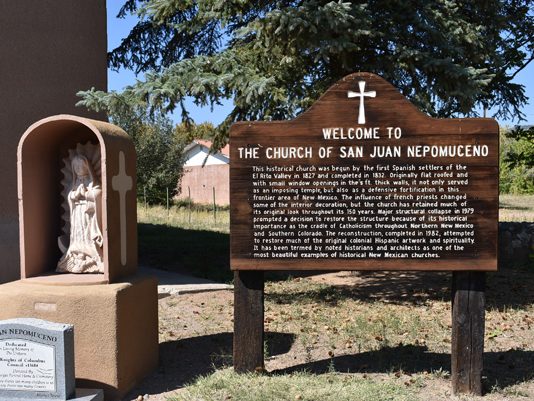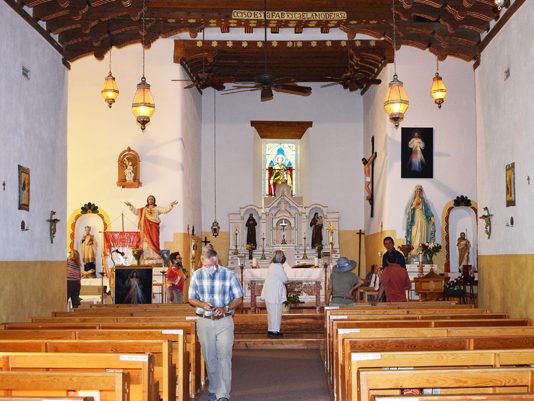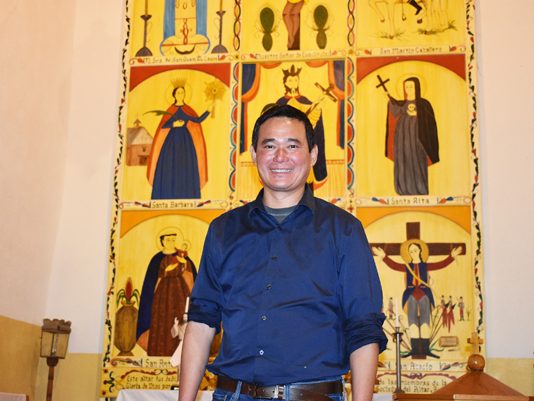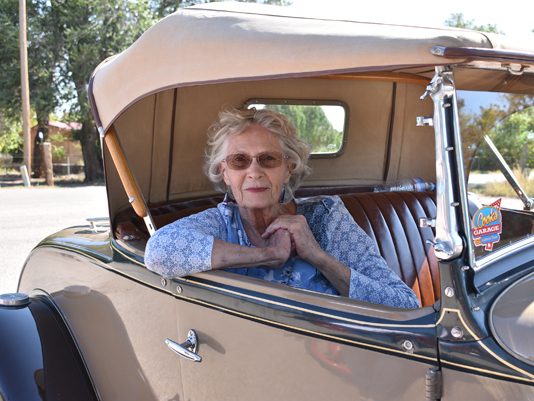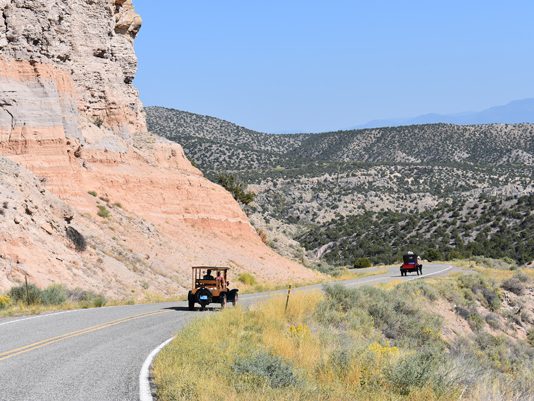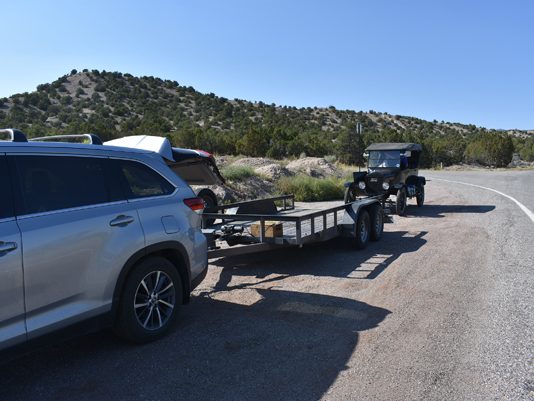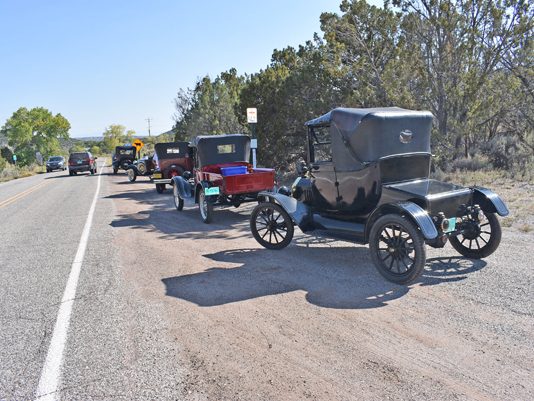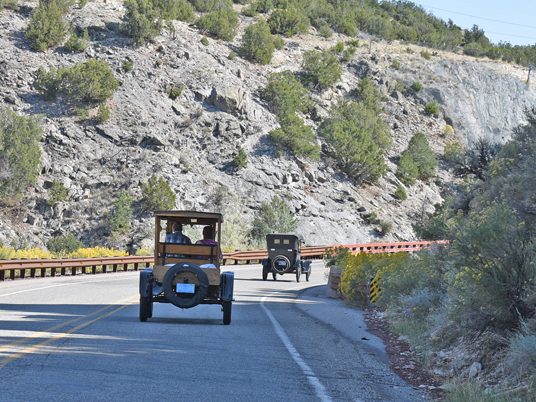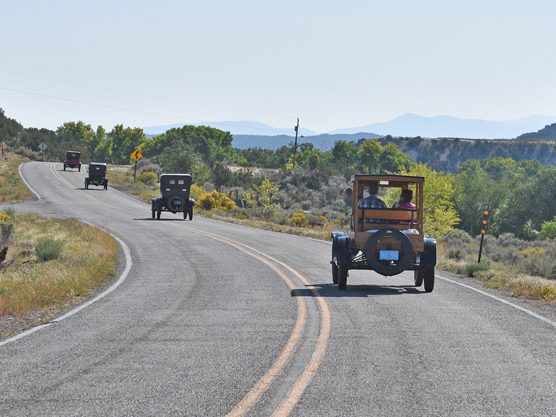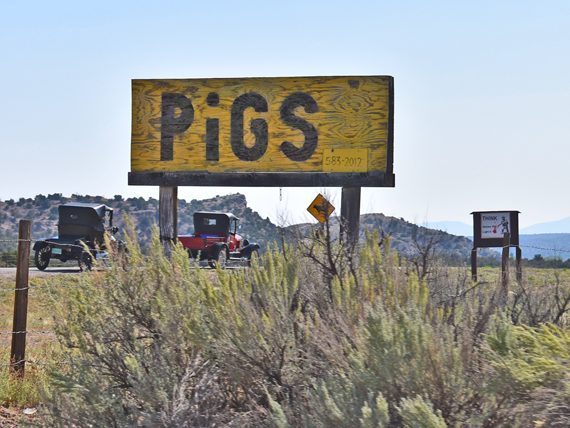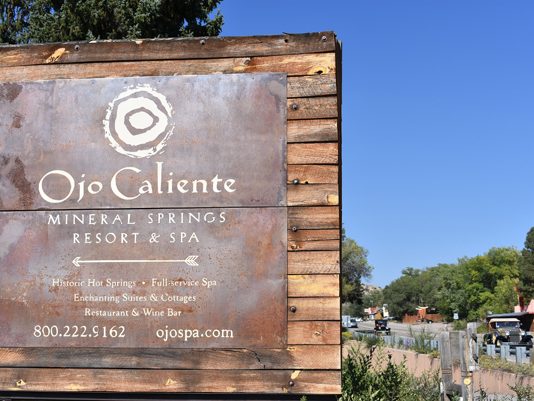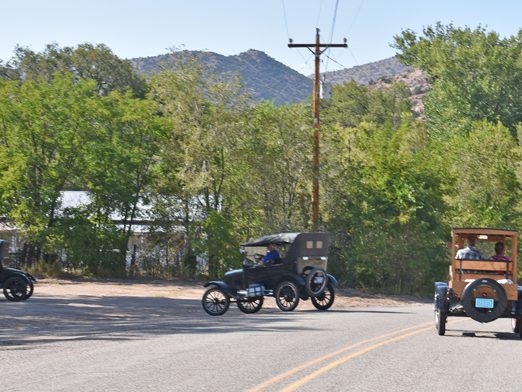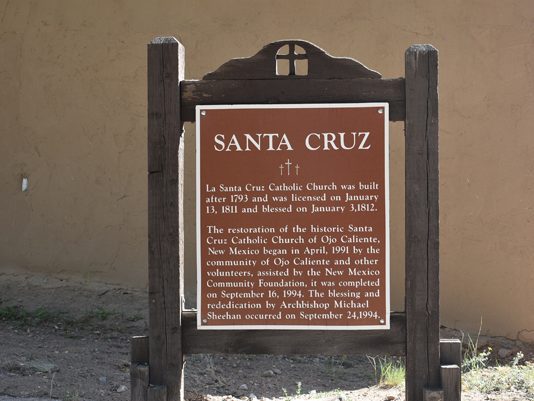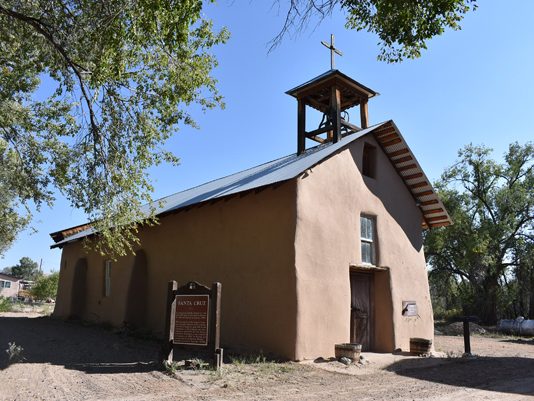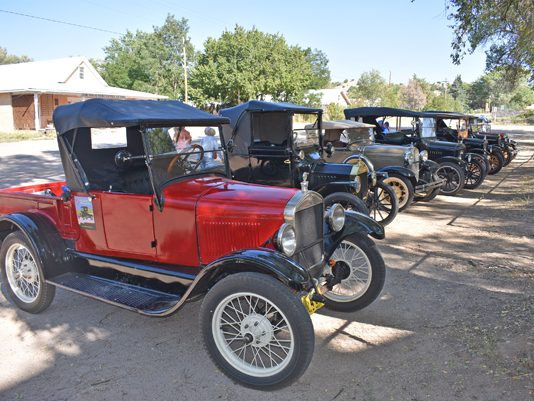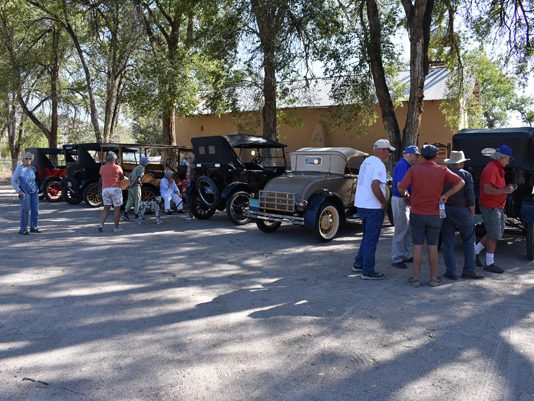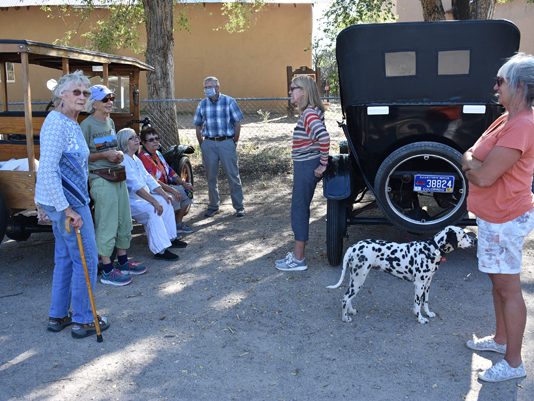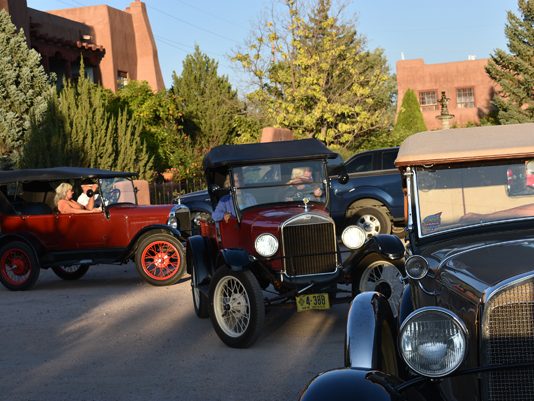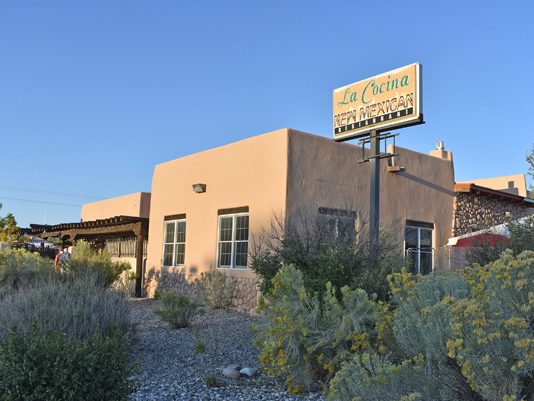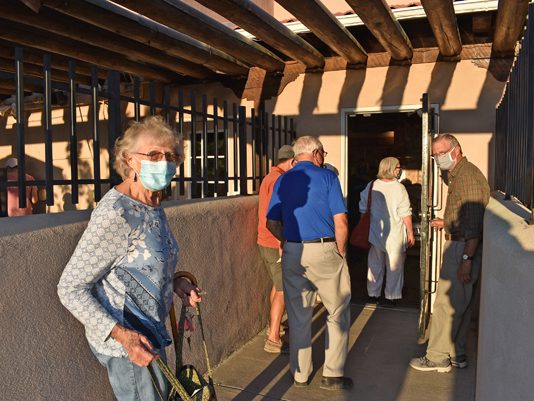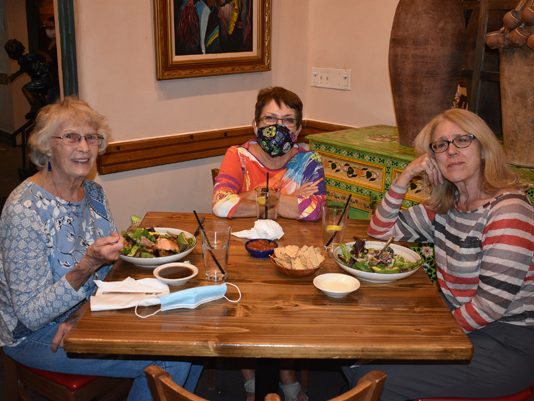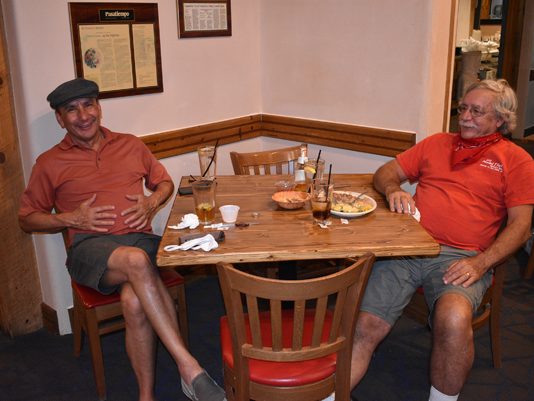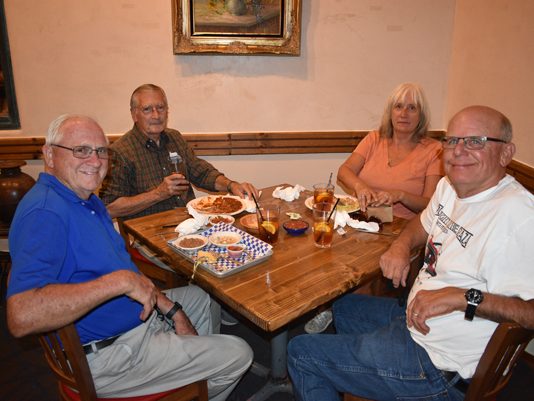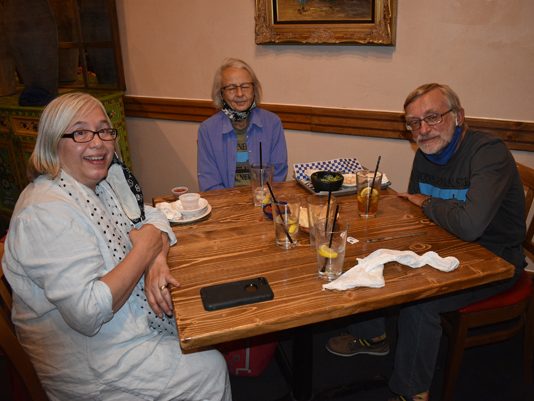Story by Paul and Marilyn Duncan, edited by Mark Wing, photos by Mark and Susan Wing
Friday 09/25/20: Hernandez, Abiquiu, El Rito, Ojo Caliente
Link to Espanola Valley Tour Day 1 (Sept. 24, 2020)
Link to Espanola Valley Tour Day 3 (Sept. 26, 2020)
Hernandez: This is where the famous photographer, Ansel Adams took a picture of the old San Jose de Chama church and burial ground in November, 1941. The title of the image is “Moonrise Hernandez, New Mexico.” The village and the church were founded in the 1700s. Later, the town name was changed to Hernandez to honor Benigno Hernández, New Mexico’s first Hispanic US Representative who served 1919-21.
Abiquiu: The village of around 250 inhabitants was originally the site of the abandoned Pueblo de Abiquiu. Spanish settlers began moving into the area in the 1730s. Some local residents are descendants of the original Spanish and Genizaro (detribalized and enslaved native Americans by the Spanish) inhabitants who received Spanish land grants.
Bode’s Store: The original Bode’s started as Grants Mercantile in 1890s serving at a store, post office, stage coach stoop and jail when Abiquiu was the starting place of the “Old Spanish Trail.” In 1919, Martin Bode, an industrious German immigrant who had worked with Miguel Gonzales in Abiquiu purchased the store. The current store is a popular stop along US 84 at Abiquiu and sells ready made-sandwiches, cold drinks, and offers a huge selection of items in the general store ranging from unique gift items to hunting & fishing supplies. The restrooms are modern. They also give out free dog treats for traveling pets!
Bosshard Tribal Arts Gallery (John & Jill): The Gallery is housed in the historic 19th century Gonzales & Bode general mercantile building that Mr. Bosshard personally restored about 15 years ago. We were invited to park our Ts in front of John’s gallery while we walked around Abiquiu. This gallery has a large collection of Americana (Native American & Western) items on display along with tribal art from Asia.
St. Thomas the Apostle Church: The original church serving the community parish was the Santa Rosa de Lima church built in the 1730s and then abandoned in 1754. After receiving a Spanish land grants, the community moved the church to Abiquiu and built St. Thomas the Apostle Church. The original church burned in 1867 and was replaced. In 1935 a new church was designed by the architect, John Gaw Meem. Reconstructing the church was a community effort. The parish members insisted that the front doors continue to face South instead of East as designed by the architect and Archdiocese officials. Work stopped on the project. “It is recorded as either a drunken school bus driver, a local Model–T driver or a concerted effort by a group of locals with their teams of oxen, mules and plows that tore into the unfinished foundation of the new church. The result was that the repair and further building of the church had its front doors oriented towards the South, looking towards the ancient mesa of the Moqui and further on into their well-guarded land grant.” Source: https://www.stthomasabiquiu.com/santa-rose-de-lima-chapel
Georgia O’Keefe Home: Georgia O’Keefe had her home and studio here from the 1940s until her death in 1986. It is currently closed due to COVID.
Penitente Morada of Abiquiu: The building was a sacred meeting site for the Penitente Brotherhood. Its members (Catholics of Spanish descent) dedicated themselves to community service and memorialized the spirit of the penance and Passion of Christ. The building was originally built in the 1700s, recently restored and still in use. A trail with stations of the cross is visible nearby.
El Rito: El Rito is a small community located NW of Española at an elevation of 6,875 ft. This was the location of one of the early Hispanic settlements in northern New Mexico and was established by about 1808 by farmers from the Abiquiu area.
The original campus of Northern New Mexico College is here and temporarily closed while the main campus is in Española.
The church of San Juan Nepomuceno was begun around 1830. The original Spanish flat roof was replaced in the mid-1800’s by the French priests. We weren’t planning on entering the church, but we were noticed by Father Joseph Nguyen Van Tao and he very graciously gave us a tour of his church. This unexpected encounter turned out to be one of the more memorable experiences on the tour. Thank you Father Joseph!
Andy Andrews 1924 touring car had generally been running well on the tour, as he had recently brought it to Larry’s garage in Corrales for maintenance and a valve job. The car had decent power, but hadn’t been driven for over a decade and the cooling system wasn’t working efficiently. The touring was having overheating problems which required frequent top offs, so Andy decided to take advantage of the “Trouble Trailer” being pulled by Marilyn Duncan for the next leg of the tour that would include some steep sections on Hwy 554. Once the steep parts of the drive were past, near the intersection of Hwy 554 and Hwy 111, the touring car was unloaded to continue under its own power. Special thanks to Marilyn Duncan for pulling the Trouble Trailer for most of the tour!
Ojo Caliente: Historic Health Spa & Resort community. Several of the buildings are on the National Register of Historic Places but unfortunately a recent fire burned the old bath house and the spa was closed to visitors. Nearby, the historic Santa Cruz Catholic Church is on the National Register of Historic Places. The church was built after 1793 and opened in 1811 and is currently recognized as a National Historic site.
Once we returned from Ojo Caliente, we had a chance to recover from the day’s tour before dinner at La Cocina. The restaurant is owned by the current mayor of Espanola.
